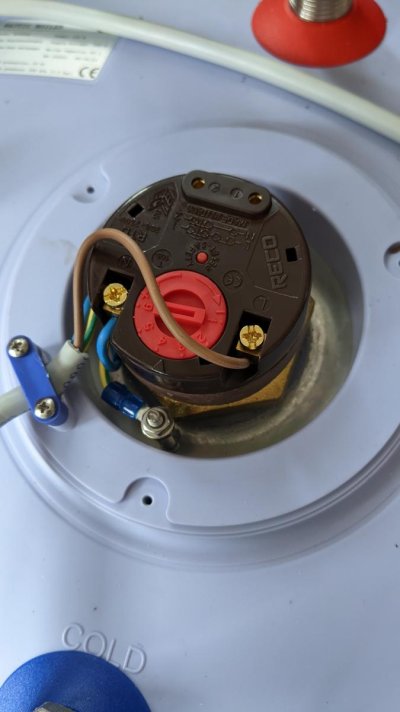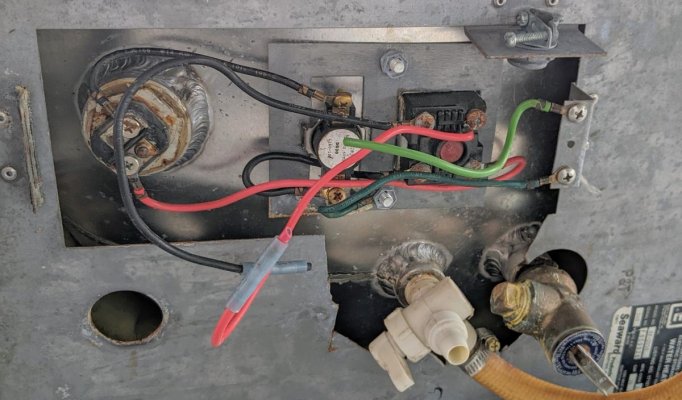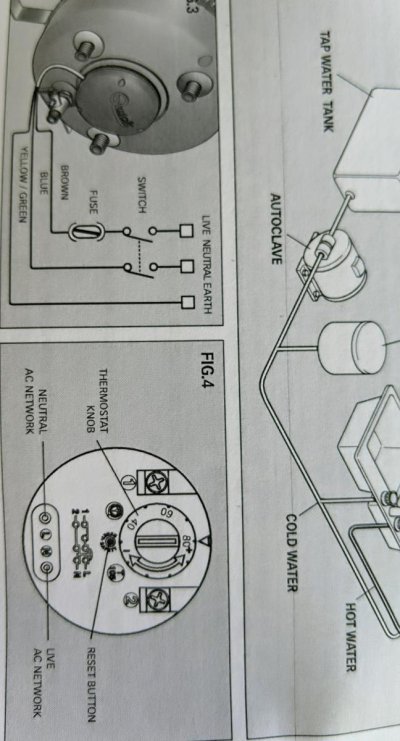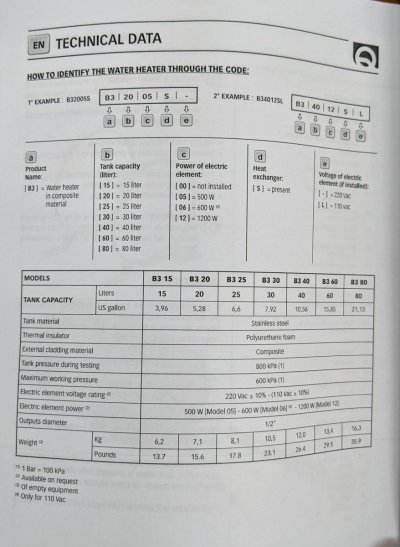Waterant
Senior Member
Hi guys,
I need advice from someone with experience with 220/240v systems.
My water heater was leaking more and more and the only replacement I found which will fit and is in stock right now was Quick B3 60L Round Water Heater.
with stainless steel tank, right dimensions and price.
I ordered 220v version because the old one was 240v so it sounded like the proper replacement.
The installation was easy but when I started doing the electrical connections I noticed they want one hot, one neutral and one ground. And I know for sure my boat's 240v system has 2 hot wires with 120v on each and one ground ( there is no neutral on 240v wiring).
The only thought I found on the Internet is to proceed with connecting the second hot to the heater's neutral wire because the system voltage between hot and neutral will be 240v which is what the heater wants.
I asked the manufacturer and they said this heater is a single phase 220V and use a professional electrician to install it. Which does not help much.
Question is: can I connect one 120v line to hot wire of the heater and the the second 120v line to the neutral of the water heater to get 240v total ( this is how the old water heater was connected and how my ac pump and ac units and the stove are connected )?
Anyone has any experience in this area?
Thanks in advance
I need advice from someone with experience with 220/240v systems.
My water heater was leaking more and more and the only replacement I found which will fit and is in stock right now was Quick B3 60L Round Water Heater.
with stainless steel tank, right dimensions and price.
I ordered 220v version because the old one was 240v so it sounded like the proper replacement.
The installation was easy but when I started doing the electrical connections I noticed they want one hot, one neutral and one ground. And I know for sure my boat's 240v system has 2 hot wires with 120v on each and one ground ( there is no neutral on 240v wiring).
The only thought I found on the Internet is to proceed with connecting the second hot to the heater's neutral wire because the system voltage between hot and neutral will be 240v which is what the heater wants.
I asked the manufacturer and they said this heater is a single phase 220V and use a professional electrician to install it. Which does not help much.
Question is: can I connect one 120v line to hot wire of the heater and the the second 120v line to the neutral of the water heater to get 240v total ( this is how the old water heater was connected and how my ac pump and ac units and the stove are connected )?
Anyone has any experience in this area?
Thanks in advance




